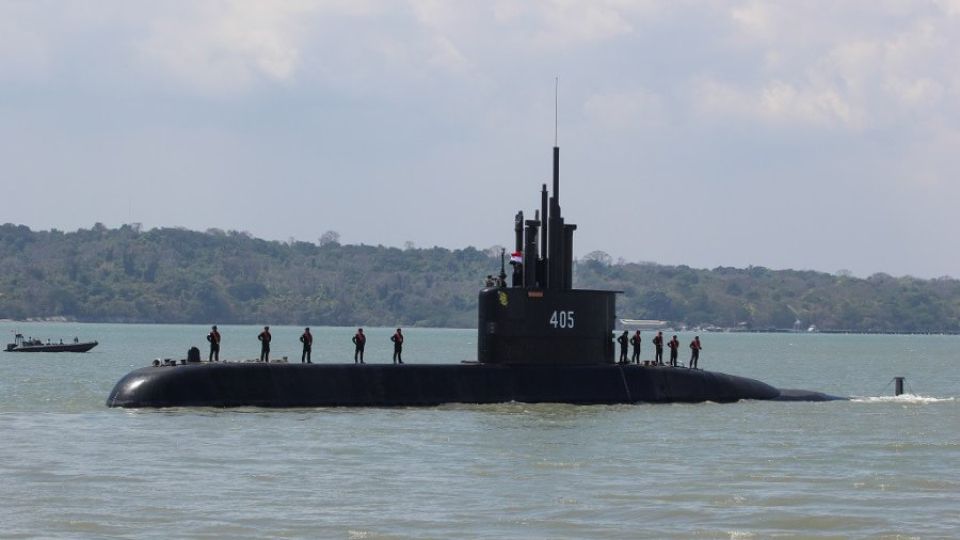October 9, 2023
JAKARTA – With a limited budget and unclear defense priority, the Navy’s aspiration to harness additional submarines by next year is improbable, posing another challenge to the country’s plan to modernize its military.
Analysts say Indonesia does not urgently need the additional submarines, but agree it is time to revamp the Navy’s outdated platforms considering the sheer size of Indonesia’s maritime territory.
Earlier this week, days before the Indonesian Military’s (TNI) 78th anniversary on Thursday, Navy chief of staff Adm. Muhammad Ali told reporters that he had communicated to the Defense Ministry the need to expand the country’s submarine fleet.
The Navy had been prioritizing the procurement of eight additional submarines, as outlined in the Minimum Essential Force (MEF) concept, ideally by the end of 2024.
Indonesia is currently home to four submarines: KRI Cakra 401, KRI Nagapasa 403, KRI Ardadedali 401 and KRI Alugoro 405. While KRI Cakra has served the country for more than four decades, the other three were procured relatively recently from a cooperation with the South Korean defense industries.
“Twelve would be ideal,” Ali said, adding that the Navy had visited various countries, including Germany, to collect information. “We’ll continue to make recommendations on which submarines would be ideal for the Indonesian waters.”
Read also: Indonesia seeks transfer of technology from French arms purchase
For almost two decades, Indonesia has undertaken a long-term project to hoist its military prowess, with capabilities that are considered outdated and unfit to face contemporary threats. The project started in 2005 with the outlining of the MEF concept, but has faced its share of challenges, including low foreign weapon procurements.
The procurements have seemed to pick up pace since 2019 when Prabowo Subianto assumed the role of defense minister. Just two years later, the TNI announced a US$125 billion acquisition program for new weapons and weapons platforms. The minister had also intensified efforts to engage with weapon-producing countries.
For the Navy, whose platforms are decades old, national shipbuilder PT PAL signed a Memorandum of Understanding (MoU) late last year with France’s Naval Group to procure two Scorpene-class submarines. The deal included a transfer of technology projected to increase Indonesia’s capacity to make its own submarines.
Long process
Yet, with the MEF’s third phase quickly approaching a deadline, analysts have said that the Navy is highly unlikely to procure eight submarines by 2024, citing budget and technical difficulties.
Procuring eight submarines would require 10 to 15 years minimum, considering the time needed to build a single submarine and sort out the paperwork, explained military expert Beni Sukadis of the MARAPI consulting firm.
“The process isn’t as straightforward as one would think,” Beni said, “It’s not as if producing countries could make multiple submarines at once. It will take more than a decade.”
Read also: Indonesia on major defense spending spree
The TNI’s limited budget also complicated the process. In his speech during the TNI’s anniversary on Thursday, President Joko “Jokowi” Widodo announced a Rp 39.47 trillion (US$2.5 billion) budget for next year’s military spending, slimmed down from this year’s estimated Rp 51.39 trillion.
“Spending on military hardware must be done wisely, in terms of amount or allocation,” Jokowi said. “It’s difficult to collect that [much] money. This is the civilians’ money, so any purchases made must be able to benefit the people.”
Not urgent, but still necessary
Considering Indonesia’s vast maritime territory, 12 submarines may not be sufficient, security analyst Yohanes Sulaiman of the Jenderal Achmad Yani University suggested.
“We may need up to 30 submarines,” he said, “but this entirely depends on what we want to achieve and our military priorities.”
Indonesia is the largest archipelagic country in the world, with two thirds of its territory, or 1.8 million square kilometers, consisting of water. The country is also strategically placed between the Pacific and Indian Oceans, which have seen increased foreign military activities in recent years.
Indonesia also shares one of the world’s most important sea trade routes, the Strait of Malacca, with its neighbors.
But there seems to be internal confusion within the military itself of what they were trying to achieve and who exactly they are trying to fend off, Yohanes said.
Beni echoed Yohanes’ sentiments, saying that the military showcased internal confusion on various occasions, especially when transitioning to a new defense minister.
Read also: Plan to create one military command in each province faces pushback
The submarines, though, are not urgently needed so long as there are no open conflicts in the region, the analysts concurred. In the meantime, cheaper options such as patrol boats and drones might be enough.
“We’re facing a lot of maritime threats, though, from illegal fishing to illegal foreign surveillance in our waters,” Beni said. “In this context, we do need the submarines for counter-surveillance and deterrence.”


